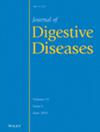Dynamic Relevance Between Reflux Events and Esophageal Motility in Patients With Proton Pump Inhibitor-Refractory Gastroesophageal Reflux Disease
Abstract
Objectives
The association between reflux events and esophageal motility abnormality is unclear. We aimed to determine the relevance between reflux events and esophageal motility in proton pump inhibitor (PPI)-refractory gastroesophageal reflux disease (GERD).
Methods
Patients with PPI-refractory or PPI-responsive GERD were enrolled. Ambulatory 24-h esophageal pH–impedance–pressure monitoring was performed. Reflux symptoms, reflux events, and esophageal motility during acid reflux episodes were recorded and compared between the two groups.
Results
Sixty patients with PPI-refractory GERD and 18 with PPI-responsive GERD were included, all of whom had pathological gastroesophageal reflux. There were no significant differences in the major acid reflux parameters (DeMeester score and proportion of patients with acid exposure time > 6%) between the two groups. However, the number of long acid reflux episodes and the time length of the longest reflux episodes were significantly higher in the PPI-refractory GERD group than in the PPI-responsive GERD group (both p < 0.05). Moreover, patients with PPI-refractory GERD had higher rates of ineffective primary (62.0% vs. 36.0%, p < 0.001) and secondary peristalsis (83.5% vs. 57.0%, p = 0.001) during long acid exposure (LAE) than those with PPI-responsive GERD. Patients with PPI-refractory GERD having LAE had a significantly lower frequency of primary and secondary peristalsis per minute and required a longer time to initiate secondary peristalsis than those without during their longest acid reflux period in the upright position (all p < 0.001).
Conclusion
Longer acid reflux episodes in patients with PPI-refractory GERD might result from frequent ineffective primary esophageal peristalsis and delayed initiation of effective secondary peristalsis.


 求助内容:
求助内容: 应助结果提醒方式:
应助结果提醒方式:


